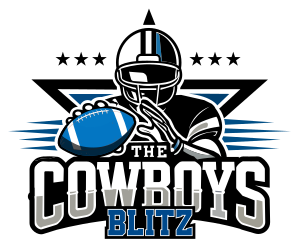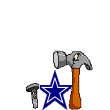Outlaw Heroes
Well-Known Member
- Messages
- 5,401
- Reaction score
- 6,609
Frankly, it's difficult to even know where to begin in responding. You haven't told us why you've highlighted the stats you've highlighted, how you're interpreting the numbers or why they tend to the conclusion that defensive weakness is being covered up by our running the ball more.
The one statistic you've cited that seems relevant to the discussion is 1st downs allowed per play, where according to your numbers we rank 10th in the league. It would have been helpful for you to have provided last year's number so that we could in fact guage whether there has been any improvement. In any event, 10th seems pretty good: it suggests that we're limiting first down conversions and that the defense is therefore doing it's part in getting off the field and helping to win the TOP battle that you're giving the running game all of the credit for winning.
I draw this conclusion based upon the fact that, as a general rule (it gets a bit more complicated when you start factoring in turnovers), one wants to see fewer 1st downs per play: a defense that allows a first down on every play will have a first downs per play ratio of 1 (100% of the plays it faces are first downs) whereas as a defense that forces 3-and-out on every series will have a first downs per play ratio of .33 (33% of the plays it faces are first down). It follows, then, that defenses will have a 1st down per play ratio of .33 (perhaps slightly lower, to reflect that on occasion the defense will be out there for a 4th down) to 1, with defenses that are better at getting off of the field and therefore limiting the number of plays they face being closer to the bottom end of that range and defenses that are worse at getting off of the field and limiting the number of plays they face being closer to the top end of the range. You haven't given us the raw numbers, but it appears that the Cowboys' D is 10th closest in the NFL to the bottom end of the range, meaning it's 10th best in the NFL at getting off the field and limiting the number of plays it faces.
I'm not sure why you've looked at 3rd downs per play or what inferences you draw from that data. I guess the only thing I'd note is that, in contrast to first downs per play, one generally would prefer to see a higher ratio of 3rd downs per play than a lower one, since the fewer 3rd downs per play the better the opposing offense is at converting first downs without even having to get to 3rd down. Accordingly, I guess the one thing like I'd to confirm is: when you say we rank 19th in 3rd downs per play, does that mean we have the 19th fewest third downs per play or the 19th most 3rd downs per play. Unlike with 1st downs per play, if its the 19th most that's actually a good thing, since it ranks the D near the top third of the league. Here again it would be useful to compare this year's data to last year's.
Points allowed are best viewed on a per game basis. You haven't provided that data. Total points allowed would have been fine if the whole season had been played, but as it stands using total points allowed benefits teams that have played fewer games. There's no good reason I can think of to look at points allowed on a per play basis. In fact, doing so penalizes teams whose whole defensive philosophy is premised on limiting the number of plays the team faces on defense.
Which is also points to a fundamental problem with what you did at the end of your post. Taking our D's per play numbers and multiplying them by the number of plays that the Eagles defense has faced tells us absolutely nothing of value. All it does is strip away one of the basic strengths of our D (its ability to limit the number of plays it faces). Yeah, if our D was as bad as Philly's at getting off the field (actually, I can't even draw this conclusion since, notwithstanding that you purport to compare the two Ds, you don't provide the same metrics for the Eagles' D that you do for ours) our absolute numbers would be a lot worse. And if my uncle had **** he'd be my aunt.
In the end, you haven't told us how your data supports the conclusion that a bad D is being masked by a running game that is winning the TOP battle. Quite the contrary, the limited useful data you've provided seems to indicate that the defense is doing its part in getting off the field, limiting the number of plays it faces and winning the TOP battle.
The one statistic you've cited that seems relevant to the discussion is 1st downs allowed per play, where according to your numbers we rank 10th in the league. It would have been helpful for you to have provided last year's number so that we could in fact guage whether there has been any improvement. In any event, 10th seems pretty good: it suggests that we're limiting first down conversions and that the defense is therefore doing it's part in getting off the field and helping to win the TOP battle that you're giving the running game all of the credit for winning.
I draw this conclusion based upon the fact that, as a general rule (it gets a bit more complicated when you start factoring in turnovers), one wants to see fewer 1st downs per play: a defense that allows a first down on every play will have a first downs per play ratio of 1 (100% of the plays it faces are first downs) whereas as a defense that forces 3-and-out on every series will have a first downs per play ratio of .33 (33% of the plays it faces are first down). It follows, then, that defenses will have a 1st down per play ratio of .33 (perhaps slightly lower, to reflect that on occasion the defense will be out there for a 4th down) to 1, with defenses that are better at getting off of the field and therefore limiting the number of plays they face being closer to the bottom end of that range and defenses that are worse at getting off of the field and limiting the number of plays they face being closer to the top end of the range. You haven't given us the raw numbers, but it appears that the Cowboys' D is 10th closest in the NFL to the bottom end of the range, meaning it's 10th best in the NFL at getting off the field and limiting the number of plays it faces.
I'm not sure why you've looked at 3rd downs per play or what inferences you draw from that data. I guess the only thing I'd note is that, in contrast to first downs per play, one generally would prefer to see a higher ratio of 3rd downs per play than a lower one, since the fewer 3rd downs per play the better the opposing offense is at converting first downs without even having to get to 3rd down. Accordingly, I guess the one thing like I'd to confirm is: when you say we rank 19th in 3rd downs per play, does that mean we have the 19th fewest third downs per play or the 19th most 3rd downs per play. Unlike with 1st downs per play, if its the 19th most that's actually a good thing, since it ranks the D near the top third of the league. Here again it would be useful to compare this year's data to last year's.
Points allowed are best viewed on a per game basis. You haven't provided that data. Total points allowed would have been fine if the whole season had been played, but as it stands using total points allowed benefits teams that have played fewer games. There's no good reason I can think of to look at points allowed on a per play basis. In fact, doing so penalizes teams whose whole defensive philosophy is premised on limiting the number of plays the team faces on defense.
Which is also points to a fundamental problem with what you did at the end of your post. Taking our D's per play numbers and multiplying them by the number of plays that the Eagles defense has faced tells us absolutely nothing of value. All it does is strip away one of the basic strengths of our D (its ability to limit the number of plays it faces). Yeah, if our D was as bad as Philly's at getting off the field (actually, I can't even draw this conclusion since, notwithstanding that you purport to compare the two Ds, you don't provide the same metrics for the Eagles' D that you do for ours) our absolute numbers would be a lot worse. And if my uncle had **** he'd be my aunt.
In the end, you haven't told us how your data supports the conclusion that a bad D is being masked by a running game that is winning the TOP battle. Quite the contrary, the limited useful data you've provided seems to indicate that the defense is doing its part in getting off the field, limiting the number of plays it faces and winning the TOP battle.



